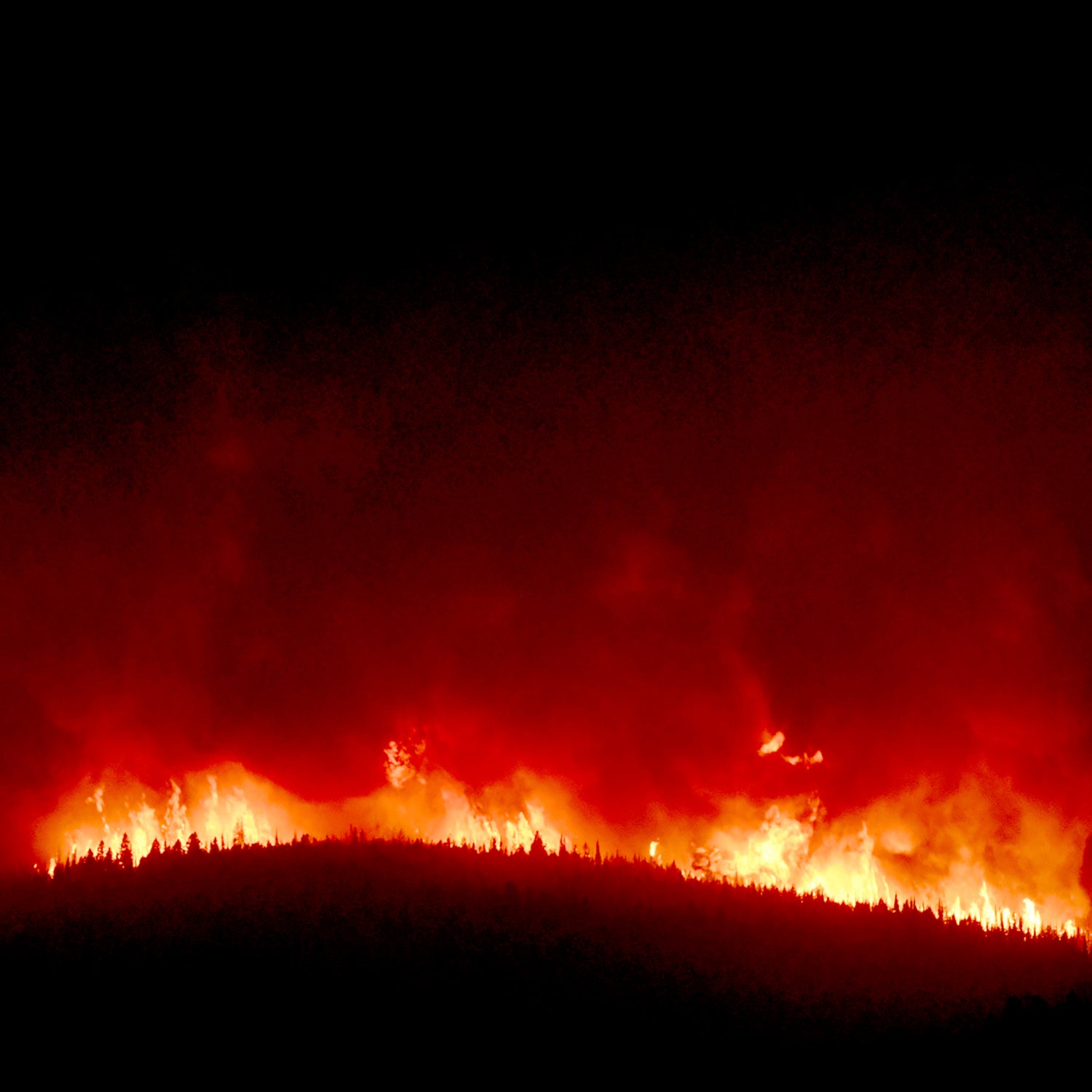One recent day, I found myself up near Seeley Lake, Montana, an empty vacation community. The air was, officially speaking, “hazardous,” or, as an air quality specialist memorably put it, “a hideous brown spiral of misery and despair.” It was the tail end of a long fire season. More than 1 million acres had burned, and in some parts of the state, it was so hot and dry after two months without rain that vegetation on rocks was catching fire. In Seeley Lake, more than 500 homes had been evacuated due to the 160,000-acre . “Stop smoking,” a cook in a Seeley Lake diner joked to her lone customer, as though such a thing were possible. On another day, at the nearby sprawling fire camp, I ran into a woman named Mary who had been evacuated. She was looking for a target for her frustrations and focused it on too-thick forests. “We haven’t been able to log,” she said. She blamed “people who don’t live here who have frivolous lawsuits.” And: “The owl or slug or whatever.”
The source of this animus was no secret. Since late August, Montana Rep. Greg Gianforte and Senator Steve Daines have been beating the drum advocating for increased logging on federally managed public lands. “Extreme environmentalists,” Gianforte has said, are to blame for bringing lawsuits that prevent logging on Forest Service land in order to protect habitat for endangered species. Arkansas Rep. Bruce Westerman is pushing a bill that would limit environmental groups’ ability to seek injunctions and exclude Forest Service land under 10,000 acres from environmental assessments under the (NEPA), opening up a vast amount of land to industry.
Interior Secretary Ryan Zinke, whose seat Gianforte filled, has advocating for “aggressive and scientific fuels reduction management”—longhand for getting the cut out. This week, at a meeting with an oil and gas group, Zinke reportedly said that President Donald Trump wants expedited permits for drilling and logging as of “yesterday.”
This strategy is unsurprising—politicians tend to think in electoral rather than ecological cycles. But they don’t seem to be aware that cutting won’t solve the problem. Much of the area consumed by the Rice Ridge Fire had previously been logged. “It’s not really a complicated issue,” says Mark Finney, a 55-year-old research ecologist at the renowned , which is run by the Forest Service. “The solution to the fire question is more fire. It’s more fire of a different kind.”
Interior Secretary Ryan Zinke has written a memo advocating for “aggressive and scientific fuels reduction management”—longhand for getting the cut out.
Finney holds the Forest Service’s consensus view that a century of fire suppression has created dense low-elevation forests primed to burn. He says foresters can log sustainably there—as long as they light prescribed burns after the cutting’s done. “Preventative medicine,” Finney says, “is more effective than emergency response.”
Some scientists see the agency’s push for mitigation as problematic. Chad Hanson, an ecologist and director of the California-based , says the Forest Service’s scientists “are under a lot of pressure to not say things that contradict the Forest Service’s management program.” He holds that we should simply create defensible space around communities—essentially, massive fire breaks clear of fuel—but otherwise keep logging to a minimum and let large wildfires burn.
But Hanson doesn’t reside in Montana, where a lot of people live off the fire-industrial complex. Many of my friends, acquaintances, and sources in Missoula work for companies that receive government contracts: to survey hillsides, to slash and log the understory, to replant land with seedlings. That’s before you consider the hotshots who arrived this summer from as far away as Alaska and Tennessee for a healthy dose of risk coupled with high pay. (Wildland firefighters get time-and-a-half for overtime, plus an extra 25 percent boost in hazard pay.) The 28,000-acre , near Arlee, Montana, cost the federal and state government $20 million; the (53,900 acres) cost $48 million; the Rice Ridge Fire, by Seeley Lake, $47 million. For a state with dearly held notions of rugged individualism, Montana feeds pretty vigorously from the government’s trough.
The fire science community, like any such group, contains a degree of internecine dispute. But both Hanson and Finney agree on the fundamental fact that more acreage needs to burn. During our meeting, Finney tells me we need “about five times” more acreage to burn per year than we see on average. Politicians were calling the season catastrophic, as were many publications, this one included; Finney, like most of his colleagues, wanted to see more fire. “There’s a lot of good burning going on right now,” he says. The trick will be adding actual fire science into the politicized rhetoric.
�����ԹϺ��� Finney’s office, white government pickups and the camo Humvees of the National Guard zoomed around. Western Montana had the feeling of mild invasion that marks most disaster zones, wherein a faraway force is summoned to save the locals. Some of the money for the cavalry came from the —and a new bill in Congress would make those funds even more readily available—but most of it came from the Forest Service. The agency has spent more than $2 billion suppressing wildfire this summer, the most expensive fire season in history. Doing so, the Forest Service has engaged in a practice called fire borrowing, meaning the agency takes from funds that would be otherwise used for, say, mitigation projects like thinning and prescribed burns. “The harder we fight,” Finney says, “the worse it gets, and the more we have to fight.”
To hear the scientists tell it, logging itself won’t offer much benefit unless we start making better use of prescribed fire.
Logging on its own won’t help that. The congressional delegation’s bluster sounds somewhat akin to a city planner complaining about traffic while pitching a bunch of new six-lane highways. It treats fire as affront—something that happens to us—rather than facing the more confounding heart of the matter: that fire is a part of our habitat, and we’ve exacerbated it by snuffing out blazes and contributing to a warmer, drier climate. In recent years, groups like the and the have partnered with local communities to work toward developing cooperative efforts to thin underbrush, perform controlled burns, and create defensible space. In theory, this kind of work could create a more diversified fire-industrial complex, one in which firefighters make their money before things turn deadly. But cooperative efforts are now being drowned out by a war of words between Montana’s politicians and its more litigious environmental groups, raising the prospect of another round of timber wars—the court battles between activists and industry that fractured Montana in the 1990s. “There’s a better way than to battle it out in court,” says Jordan Reeves, of the Wilderness Society.
To hear the scientists tell it, logging itself won’t offer much benefit unless we start making better use of prescribed fire. Lacking it, we might simply be able to expect more invasions of the cavalry. Which suits some Montanans just fine. Just before it snowed last week, one wildland firefighter, who asked not to be named, told me, “We’re rounding third base and heading for home.” He smiled. “But you want to stay on third base as long as possible.” This is what they say smoke smells like in Montana: money.


